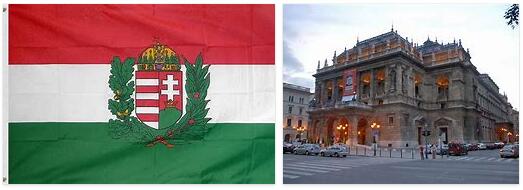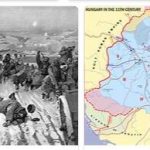
Hungary Demographics 1998
Population
The demographic dynamics of the country are characterized by a decrease in population, due to a rather low birth rate (10, 4 ‰ in 1996) against a death rate of 14, 1 ‰. At a 1998 estimate, the population was 10. 116. 000 residents (they were 10. 374. 823 to the census in 1990). It is mostly made up of Magyars, with small German and Slovak minorities; existing Hungarian minorities in Romania (about 1. 700.000, mainly resident in Transylvania) and Slovakia (600. 000) are protected, at least formally, and disputes between applicants, by special treaties made by Hungary in 1996 with the two countries. The capital Budapest, one of the most celebrated European metropolises, brings together almost a fifth of the country’s population, feeds renewed and important tourist flows and acts as a ‘primate city’ towards other urban centers; in fact, the largest of the latter, Debrecen, barely reaches 210. 000 residents.
The Hungary it is a special partner of the Western European Union (WEU) and a State associated with the European Union. It joins the CEFTA (Central European Free Trade Agreement, formerly ‘Visegrád group’) with the Czech Republic, Poland, Slovakia and Slovenia and has been a member of the OECD since May 1996 (see below: History).
Economic conditions
After having first launched a process of economic liberalization among the countries of Eastern Europe, the Hungary it went through a long phase of transition, which lasted throughout the first half of the 1990s; the State – despite the vast privatization program, in part already undertaken – is still engaged in the management of productive activities. The process of conversion to the market economy has caused serious problems, including rising inflation and a marked rise in unemployment; the external debt increased and there was a serious deficit in both the trade balance and the balance of payments. To get out of the crisis, in 1994 the government has launched an economic policy of restrictions, with the aim of regaining the confidence of foreign investors in the country: the Hungarian forint was devalued; the privatization plan was given new impetus (especially in the energy and telecommunications sector); social expenditures were reduced, while the tax burden increased. The ‘fundamentals’ of the economy have improved rapidly, GDP grew (+ 4.6 in 1998), the deficit of the balance of payments fell (by 2, 2 to 1, 5 billion dollars) and some improvement has also had in the inflation rate (dropped to 15 % in 1998 against the 15, 3 % the previous year). However, these results did not improve the living conditions of the population, whose purchasing power, although fairly stable, decreased considerably in the second half of the 1990s. For Hungary 2000, please check neovideogames.com.
Most of the Hungarian plain is cultivated with arable land, and in particular with cereals: the Hungary it is a traditional producer of wheat and the fifth largest European producer of maize (second world producer per resident). Furthermore, potatoes and sugar beets are grown, while on the northern shore of Lake Balaton, and generally on the hills to the west and north of the country, not very extensive vineyards thrive but with a renowned production (tokaj wine). The less productive soils (puszta) are left to graze for all types of livestock; the pigs (just under 5 million in 1998) feed the traditional manufacture of sausages, an item of a certain weight in exports. Freshwater fishing is also good, with approx 24. 000 tons of fish per year. In 1997 the percentage of employees in the primary sector was around 8 %.
The mining production mainly concerns lignite, bauxite and uranium, used in the Paks nuclear power plant, which today ensures – despite some opposition from public opinion – about 40 % of the national production of electricity, for the rest almost totally conventional thermal. . There are, among the underground resources, even small amounts of oil (1.300. 000 t in 1998), natural gas (4 billion m ³) and coal. In the industrial sector, aluminum metallurgy, linked to the extraction of bauxite, as well as transport, chemical and food factories stand out. Industrial production, which had been in decline for many years after the end of the communist regime, started to rise again (+ 11 % in 1998). Machinery, vehicles and chemical products are among the first items for export, in a well-developed foreign trade, today mainly aimed at Germany (27 % of imports and 37 % of exports in 1997), but which still relies heavily on relations with CIS countries; Austria and Italy are also important trading partners of Hungary.




